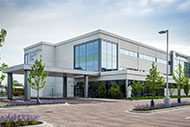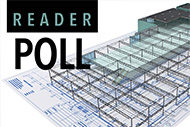Patient badge is removed at discharge and placed in a drop-box to facilitate the hospital's automated discharge process.
Before Stamford (Conn.) Health recently opened its new 305-bed hospital, it identified a need to implement a system that would provide real-time patient locations, monitor patient and caregiver interactions, and offer real-time notification of patient discharges. The goal was to maximize patient throughput and staff workflow and ultimately cut costs.
The hospital found a solution to the challenge by installing a real-time locating system (RTLS) technology that automated many of its manual workflows. It provided:
- Visibility to real-time patient location
- Automated occupancy and discharge
- Alarms for patient walk-out, staff assistance, patients in isolated areas
- Interaction reporting between tagged entities
- Nursing access to asset and staff location
With TeleTracking’s Capacity Management Suite, a new patient is assigned a badge at admission that also monitors his or her location while in the hospital. When patients are discharged, environmental services is notified about the need to clean the vacated patient room. Staff also are assigned a badge and location transmitters throughout the hospitalto identify their location.
“The results to date have been amazing,” says Kelly Jones, R.N., nurse informatics manager. “Prior to badging our patients, we relied solely on patient transport to discharge patients, which impacted the turnaround times on our beds, she says. "Once we implemented and integrated RTLS throughout the facility, 61 percent of our discharges now go out this way. In fact, some units are as high as 72 percent."
Stamford actually had some experience with RTLS technology a few years ago, but health system leadership knew that the technology had developed to where it could improve patient discharge efficiency and patient care.
The system enabled Stamford Hospital to save $627,412 during a recent seven-month period from patient bed days gained through improved efficiencies. Stamford also is projecting that it will provide care for an additional 131 patients annually and improve care.
“We knew that it was critical to get the clinical staff involved and engaged by stressing that implementing this technology would streamline processes and give them more time to spend with patients,” Jones says.
“Everybody understood the implications — and the resulting benefits — of wearing badges. The environmental services and patient transport [departments] immediately saw how their workflows would improve by knowing where patients were, when they were going to be discharged and expediting the process of room turnover for the next patient.”
Physicians’ workflow also has improved because patient location is determined more quickly, which also improves patient safety. It is also helps with infection control by enabling staff to determine each touchpoint and interaction involving an infected patient.
Jones credits the system’s success to staff engagement. “It is now a part of our culture and one more way we live up to our philosophy of healing reimagined,” she says.





